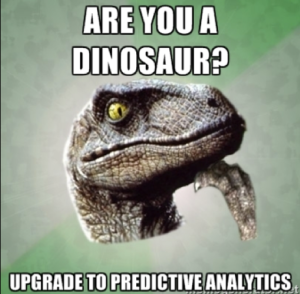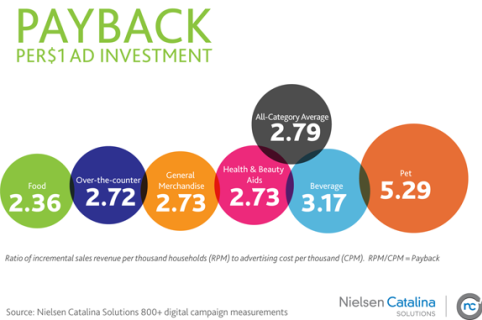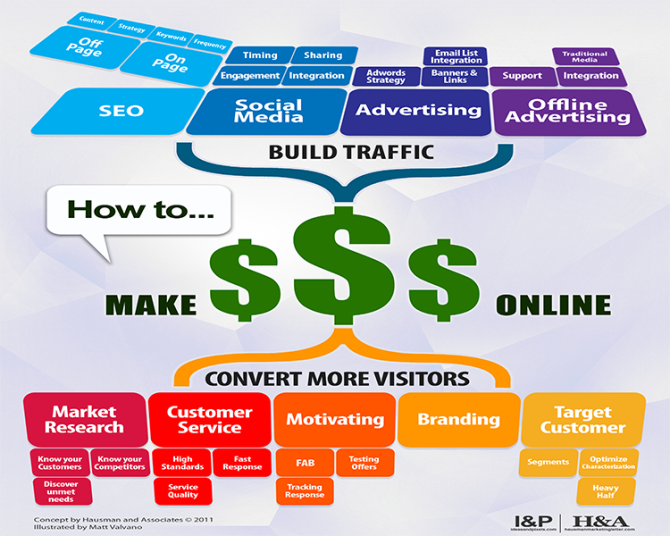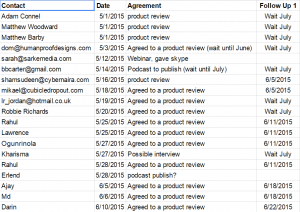 In the bad old days, digital marketing was a free-for-all where instant gurus touted their money-making formulas (usually little better than snake oil salesmen) and deluded followers into spending thousands for coaching programs that didn’t work. Of course, without metrics for measuring the ROI of digital marketing, these gurus continued raking in the money from gullible and desperate businesses.
In the bad old days, digital marketing was a free-for-all where instant gurus touted their money-making formulas (usually little better than snake oil salesmen) and deluded followers into spending thousands for coaching programs that didn’t work. Of course, without metrics for measuring the ROI of digital marketing, these gurus continued raking in the money from gullible and desperate businesses.
This isn’t a new problem and it’s unique to digital marketing. As far back as the late 1800’s John Wannamaker is quoted as saying:
Half the money I spend on advertising is wasted; the trouble is I don’t know which half.
Traditional advertising faces a similar problem with companies allocating 60 percent of their media budget to television when only 18 percent of TV advertising campaigns generate a positive ROI, according to Nielsen.
Now, of course, digital marketing is much more sophisticated and it’s harder for false gurus to seduce business owners without proving the ROI resulting from their digital marketing programs. Below are results from studies showing the ROI of digital marketing:
ROI of digital marketing

- A study by Microsoft used big data to measure the ROI of digital marketing both with and without traditional advertising. They found digital marketing outperforms all forms of traditional advertising (TV, print, radio, and outdoor), while combining both resulted in the highest ROI. Thus, digital marketing isn’t an either/ or strategy, but businesses should blend traditional advertising and new media. Also, businesses whose media spend is still focused on traditional advertising should migrate their budgets in favor of digital marketing.
- A case study by Google and Dove showed a 6 percent lift in sales, while combining traditional advertising (TV) with digital marketing resulted in an 11 percent increase in sales. Interestingly, the study showed the “tide lifts all boats.” In other words, advertising a single product through digital marketing caused an uplift in sales of other Dove products.
- Nielsen showed that CPG (Consumer Packaged Goods Companies) demonstrated the positive ROI of digital marketing was nearly 2.8 percent, with some industries showing an ROI of over 5 percent — not too shabby.
The state of ROI assessment
The state of ROI assessment is dismal, according to the Fournaise Marketing Group, which found:
Nine out of ten (90%) global marketers are not trained to calculate return on investment (ROI), and 80% struggle with being able to properly demonstrate to their management the business effectiveness of their spending, campaigns and activities, according to new research.
Why is ROI assessment so bad?
Fournaise CEO identified two problems in their study that account for the dismal state of measurement of ROI in digital marketing (or marketing in general, for that matter).
The first is the poor training of marketing majors in assessment of marketing ROI and the second is the influx of non-marketing majors into the marketing discipline (over 1/2 of all marketing employees have non-marketing degrees, most often in the social sciences). He sums up the problem with this statement:
In other words, every Tom, Dick & Harry is a Marketer, lacking the scientific and financial knowledge necessary to inform and optimize the creative side of Marketing. CEOs have told us again and again: they want ROI Marketers, i.e. 360-degree performance machines trained to deliver (real) business results and prove/optimize ROI. As long as Marketers continue to fail to get trained in, master the use of and optimize Marketing Performance & Marketing ROI, they will struggle to demonstrate to CEOs that they are not ‘money spenders who jump on (and hide) behind the latest fads and blow smoke’, but real business generators.
ROI of digital marketing and market performance tips
First, let’s take a look at digital marketing and where it fits within the spectrum of traditional marketing. Here’s a very cool infographic I created with the help of Matt Valvano from Ideas and Pixels — a first-rate graphic designer.

The infographic shows the various elements necessary to achieve positive ROI of digital marketing campaigns. Basically, two things account for positive ROI:
- Bringing more visitors to your store (or estore)
- Convert more visitors who show up at your store or estore
Period.
Unfortunately, many attempts to measure the ROI of digital media focus on these end results, totally ignoring the variety of factors that generate positive outcomes — a very dangerous practice.
Tip #1: Think beyond outcome measures
So, my first power tip for measuring the ROI of digital marketing is understanding the complex set of activities and interrelationships among activities resulting in positive ROI. For instance, a focus on building a social media community backfires quickly if you have problems with customer satisfaction due to poor product performance — all you’ve done is give disgruntled customers a platform for complaining about your product or service.
Tip #2: Measure what matters, not what’s easy
Often you’ll find digital marketers measuring the easy things — likes, clicks. Sure, these things matter (somewhat), but they’re not the most important (or only) important aspects of a successful digital marketing campaign.
First, set clear goals for your digital marketing campaign — goals that go deeper than just outcome performance measures. Then, create KPIs (key performance indicators) related to those goals.
If you’re convinced customer satisfaction impacts market performance (as is the case for most businesses), assessing sentiment makes a lot of sense. But, don’t stop with sentiment analysis — look at the totality of KPIs and measure all of them. Better yet, chart performance across all KPIs over time, which is much more insightful than putting all your faith in point measures.
Tip #3: Metrics aren’t enough
Don’t simply create dashboards with displaying your metrics. Statistics don’t speak for themselves and require interpretation by skilled analysts combining both the art and science of analytics to uncover actionable insights from your metrics.
While we’re on the topic of dashboards, think about issues related to the level of analysis appropriate for different users. For instance, the VP marketing needs a broad overview of metrics related to the entire product bundle, while brand managers need a more detailed view of just the products they handle.
A good dashboard allows users to dive deeper or take a broader overview of metrics. Also, adding the ability for users to create ad hoc reports and alternative visualizations increases the effectiveness of your dashboard.
Tip #4: Tie compensation to metrics
One of the biggest challenges firms face (once they get over the hurdle of generating meaningful metrics) is translating data into insights then applying those insights to actions. So, it’s a good idea to tie compensation to metrics — this ensures your employees pay close attention to metrics and try to optimize market performance by using insights provided through these metrics.
I have three caveats, however, when it comes to tying compensation to metrics:
- Balance the compensation to ensure it’s challenging to achieve higher levels of compensation without being too difficult to achieve. If you expect too high an ROI of digital marketing employees (something unrealistic) they won’t try. If the expectation is too low, they’ll leave money on the table by not doing everything possible to optimize your digital marketing campaigns. You also want to pay attention to the degree to which compensation fluctuates based on performance. There should be adequate incentives to optimize the ROI of digital marketing.
- Be very careful that you’re compensating employees for metrics that correlate highly with the ROI of digital marketing. Tying compensation with vanity metrics, like # of Facebook Fans, will drive behavior toward achieving a large Facebook fan-base. However, there’s strong evidence that absolute size of your Facebook community matters little while the engagement of your community provides a stronger impact on the ROI of digital marketing. Pay for what matters.
- Employees must have control over factors impacting metrics. For instance, marketers might have little control over customer satisfaction if the production department turns out a really crappy product or logistics can’t get the product delivered in a timely manner. Employees quickly become dissatisfied with a compensation plan containing elements they don’t control.
Tip #5: Don’t stop with descriptive analytics
Move past descriptive analytics (how many, how much, how often) to employ predictive analytics.
In essence. predictive analytics build models using big data to uncover relationships among the factors that impact the ROI of digital marketing (or any other variable of interest).
Your turn
What advice and tips do you have for improving the ROI of digital marketing?
Need help?
We welcome the opportunity to show you how we can make your marketing SIZZLE with our data-driven, results-oriented marketing strategies. Sign up for our FREE newsletter or get the 1st chapter of our book for free.
(367)
Report Post






